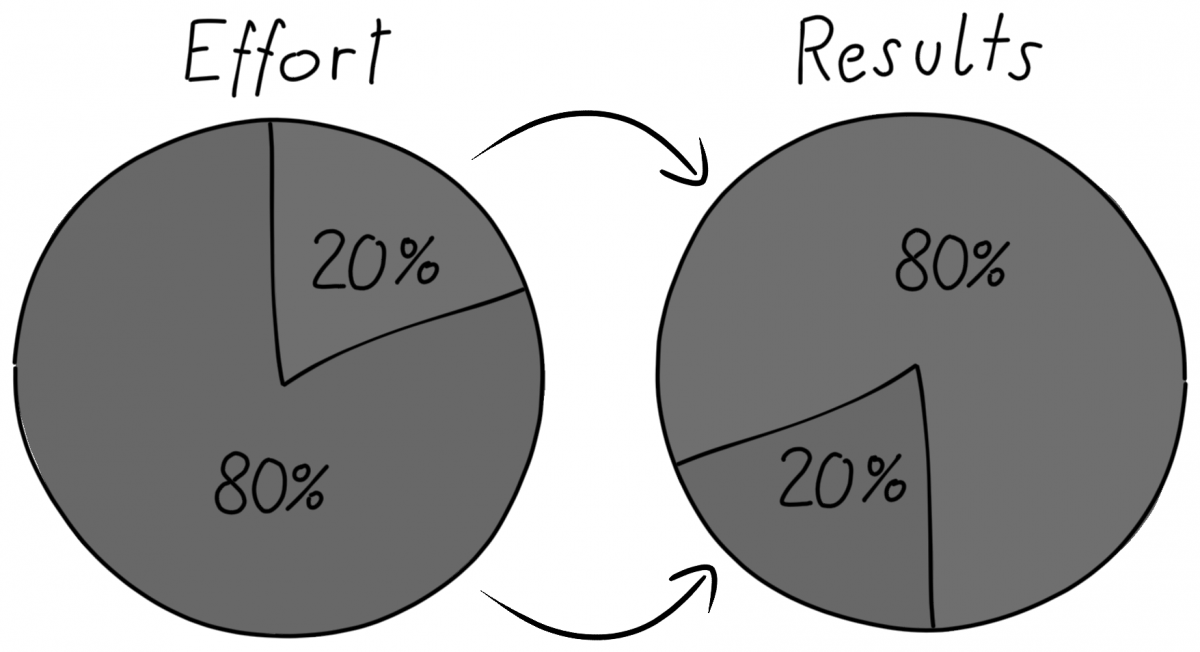Introduction
In the realm of decision-making, the human mind often grapples with limited time, resources, and attention. In such circumstances, understanding and applying the Pareto Principle can be a valuable mental model. The Pareto Principle, also known as the 80/20 rule, states that roughly 80% of the effects come from 20% of the causes. This concept holds significant relevance in decision-making processes as it helps us prioritize, allocate resources efficiently, and focus on the most impactful factors. Anchored in human psychology, the Pareto Principle finds prevalence in our day-to-day lives and can guide us towards making more effective decisions.
The Relevance of the Pareto Principle in Decision-Making
The Pareto Principle acknowledges the unequal distribution of inputs and outputs in various contexts. By understanding this principle, individuals and groups can identify the vital few factors that yield the majority of results and make informed choices. The Pareto Principle can be observed in personal life decisions, business scenarios, and public policy-making, shedding light on the potential consequences of neglecting its insights.
Occurrences of the Pareto Principle
- Personal Life Decisions: Consider a person’s time management. The Pareto Principle suggests that approximately 20% of activities contribute to 80% of their productivity. By identifying and focusing on the vital few tasks, individuals can optimize their time and achieve significant results. However, falling prey to the Pareto fallacy, individuals may spend excessive time on less impactful activities, leading to inefficiency and a lack of progress.
- Business Scenarios: In business, the Pareto Principle often manifests in customer relationships. Roughly 20% of customers generate 80% of revenue, indicating the significance of cultivating strong relationships with these key clients. However, companies that neglect this principle may dedicate resources disproportionately to less valuable customers, leading to diminished returns and missed growth opportunities.
- Public Policy-Making: The Pareto Principle can inform effective policy-making by identifying the vital few issues that have the most significant impact on society. For instance, in healthcare, the principle highlights that a small portion of the population may account for a majority of healthcare costs. By prioritizing interventions for this subgroup, policymakers can allocate resources efficiently and achieve a more equitable and cost-effective healthcare system. Ignoring this principle might lead to misguided policies that spread resources thinly, yielding suboptimal outcomes for the population as a whole.
Mental Biases and Psychological Underpinnings
Several cognitive biases contribute to the occurrence of the Pareto Principle. One such bias is the availability heuristic, which leads us to overestimate the importance or prevalence of events based on their ease of recall. This bias can hinder decision-making by causing individuals to focus on easily accessible information rather than considering the vital few factors that truly drive outcomes.
Another contributing bias is the status quo bias, which refers to our inclination to stick to existing habits and routines. This bias can prevent individuals from questioning established practices and identifying the vital few elements that could bring about substantial improvements.
Identifying and Avoiding the Pareto Principle Fallacy
To avoid falling prey to the Pareto Principle fallacy, it is crucial to cultivate awareness and employ strategies that enable more objective decision-making:
- Prioritize Impact: Regularly assess your activities, goals, and resources to identify the vital few factors that have the greatest impact. Focus on optimizing these factors rather than getting caught up in less impactful pursuits.
- Conduct Cost-Benefit Analysis: Utilize cost-benefit analysis to evaluate the potential outcomes and returns of different options. By quantifying the costs and benefits, you can identify the most promising avenues and allocate resources accordingly.
- Challenge the Status Quo: Avoid complacency and actively challenge the status quo. Continually question existing practices and routines to ensure they align with the vital few factors that truly drive results. Embrace change when it offers the potential for significant improvements.
- Seek Diverse Perspectives: Engage in dialogue with others and seek diverse perspectives. This allows you to gain alternative viewpoints and consider factors that may have been overlooked, providing a more comprehensive understanding of the situation.
Conclusion
The Pareto Principle offers valuable insights into decision-making by highlighting the vital few factors that have the greatest impact. By understanding this principle and avoiding its fallacy, individuals and groups can allocate resources efficiently, prioritize effectively, and achieve better outcomes. Recognizing the prevalence of the Pareto Principle in personal life decisions, business scenarios, and public policy-making empowers us to make informed choices that align with our best interests. Embracing awareness and actively avoiding the mental trap of neglecting the vital few can unlock new levels of efficiency and success in our decision-making processes.
